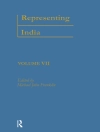Martin Buber’s work ranged across disciplines and modes of expression to include philosophy, religion, social studies, and literature. Buber never presented a comprehensive statement of his worldview in any of his central works and repeated time and again that he had no ‘doctrine.’ In this book, Avraham Shapira traces the history of Buber’s ideas and locates underlying structures which unite Buber’s thought. Ultimately, Hope for Our Time shows the connection between Buber’s philosophy and his spiritual biography.
Inhoudsopgave
Contents
Preface
Introduction
Comments on Buber’s Means of Expression
1. Polar Duality
2. The Cause and the Person: Destiny and Vocation
3. A Divided Heart and Man’s Double
4. Existential Tensions and Early Struggles
5. A Conversion
6. Duality and Its Structures
7. Distance – Relation
8. Vortex – Direction
9. Moment – Eternity
10. Concluding Remarks
Notes
Bibliography
Index
Over de auteur
Avraham Shapira is Professor, Department of Jewish History, Tel Aviv University. He is the author of
The Kabbalistic and Hasidic Sources of A.D. Gordon’s Thought.



![Hoes van Paul H Barrett: The Works of Charles Darwin: Vol 8: Geological Observations on the Volcanic Islands Visited during the Voyage of HMS Beagle (1844) [with the Critical Introduction by J.W. Judd, 1890] Hoes van Paul H Barrett: The Works of Charles Darwin: Vol 8: Geological Observations on the Volcanic Islands Visited during the Voyage of HMS Beagle (1844) [with the Critical Introduction by J.W. Judd, 1890]](https://static.worldofdigitals.com/thumb_webp/350/9781315477350.webp)








